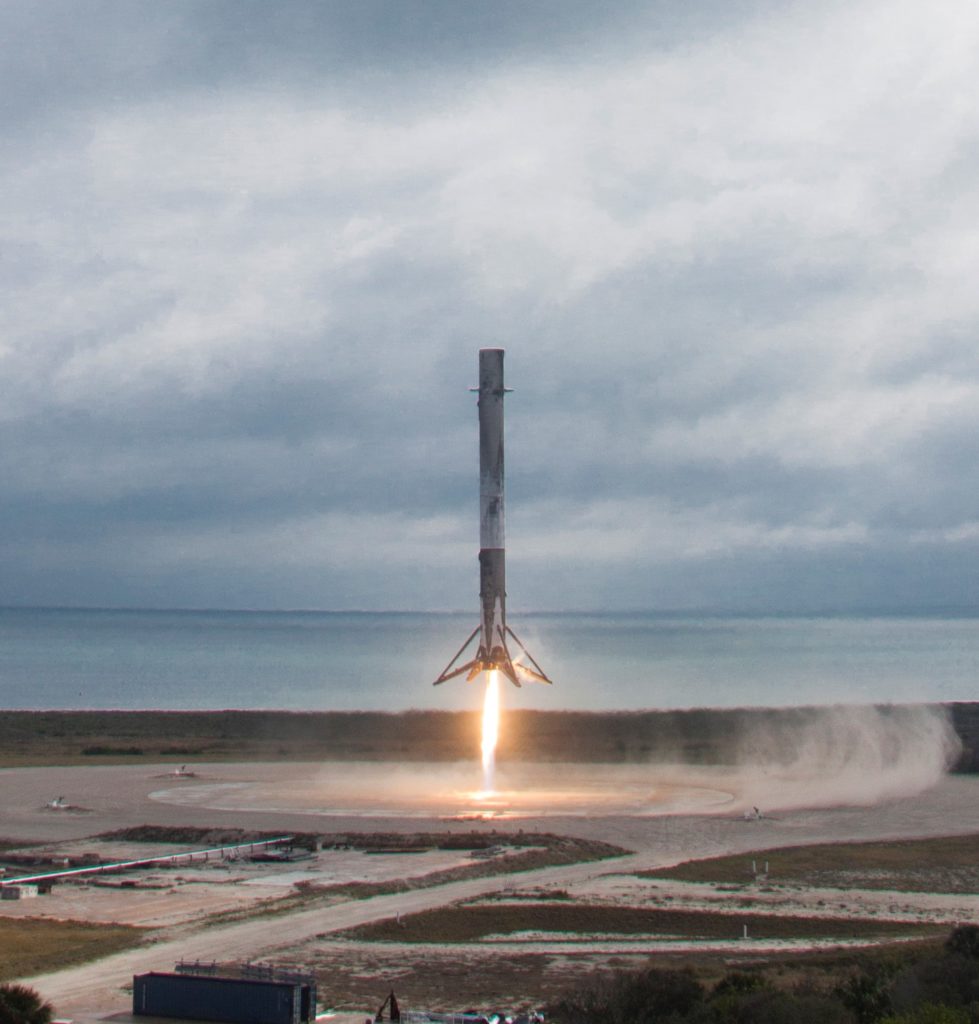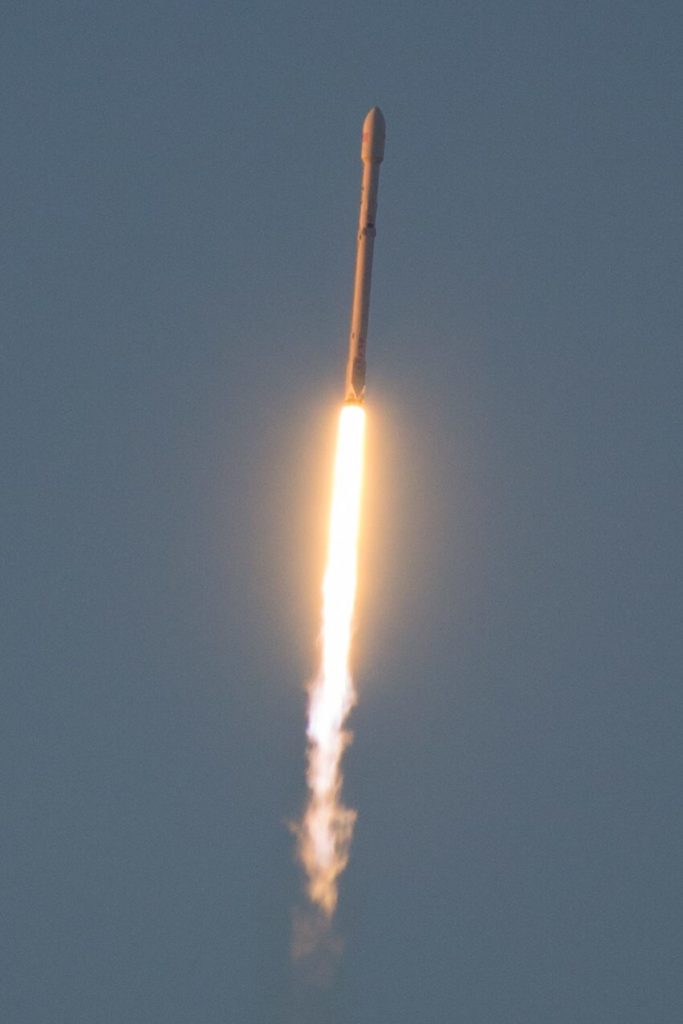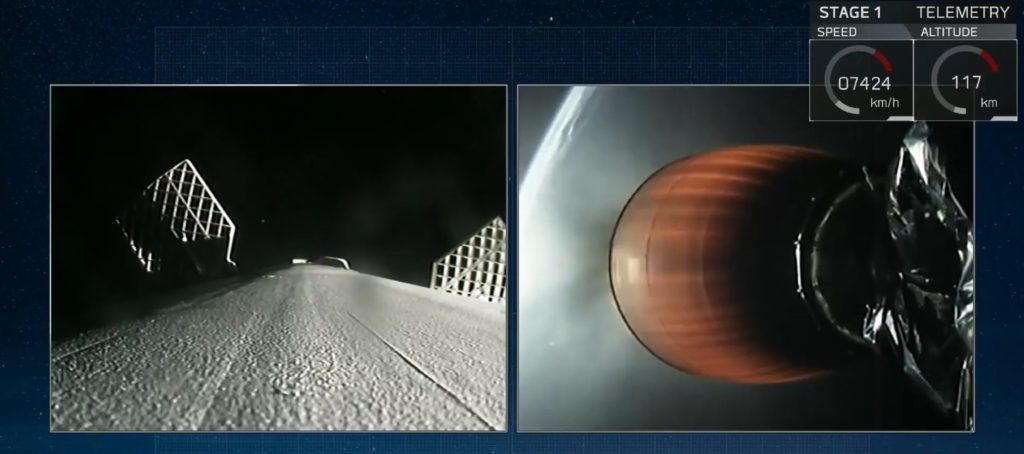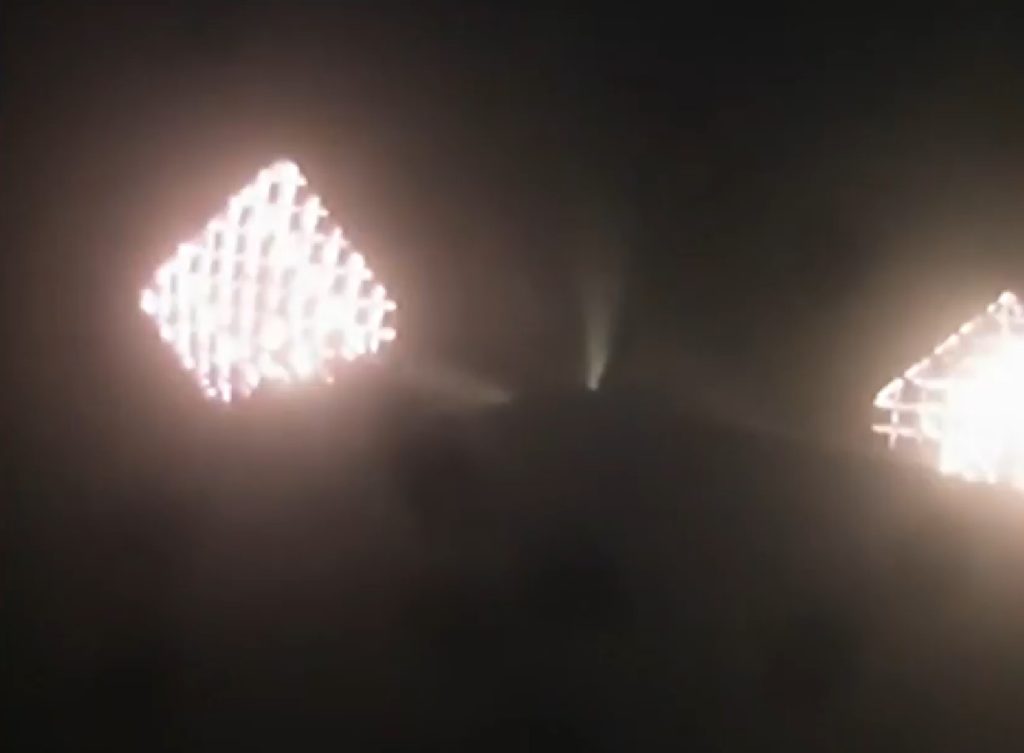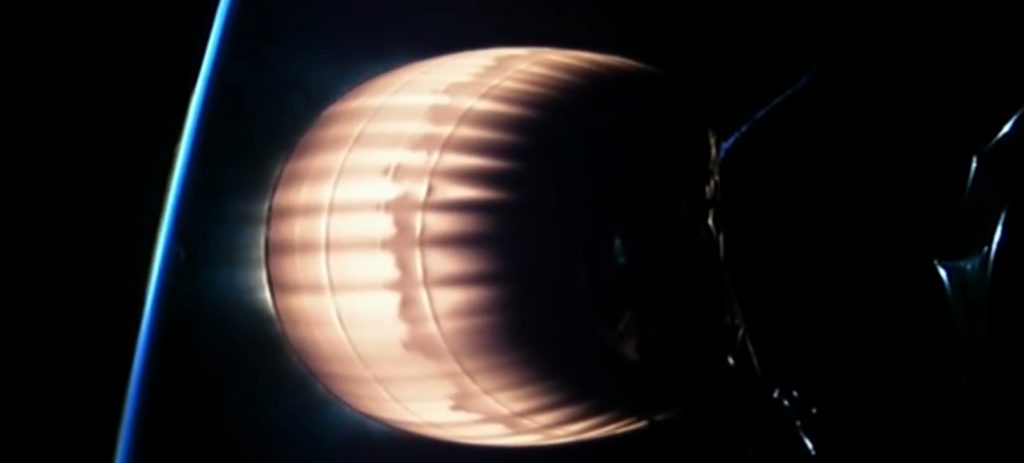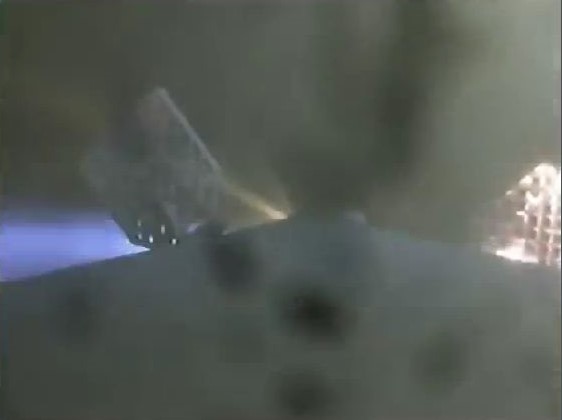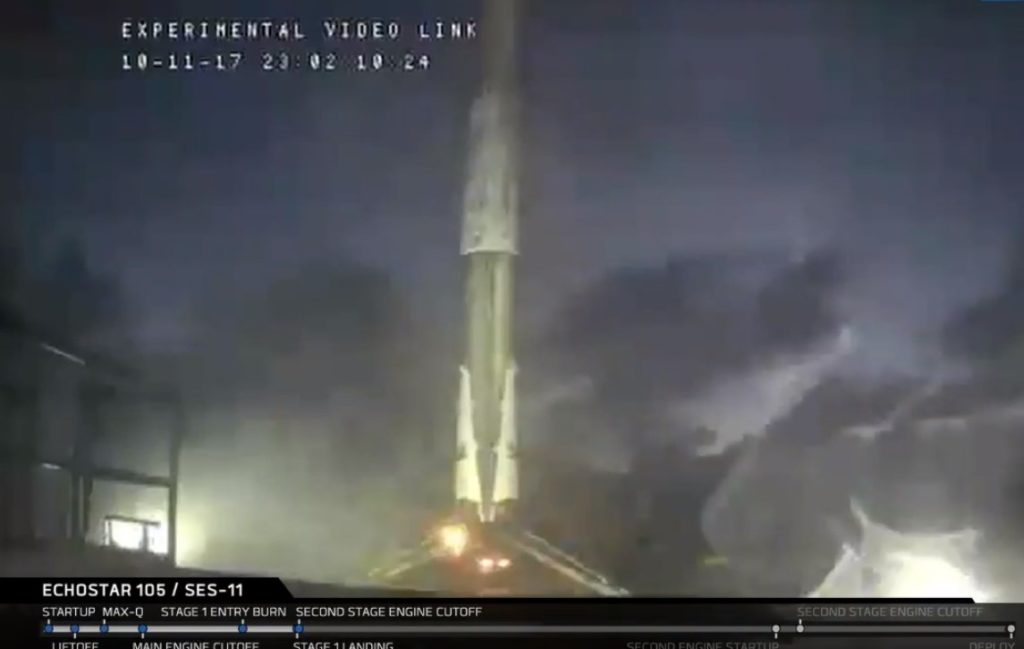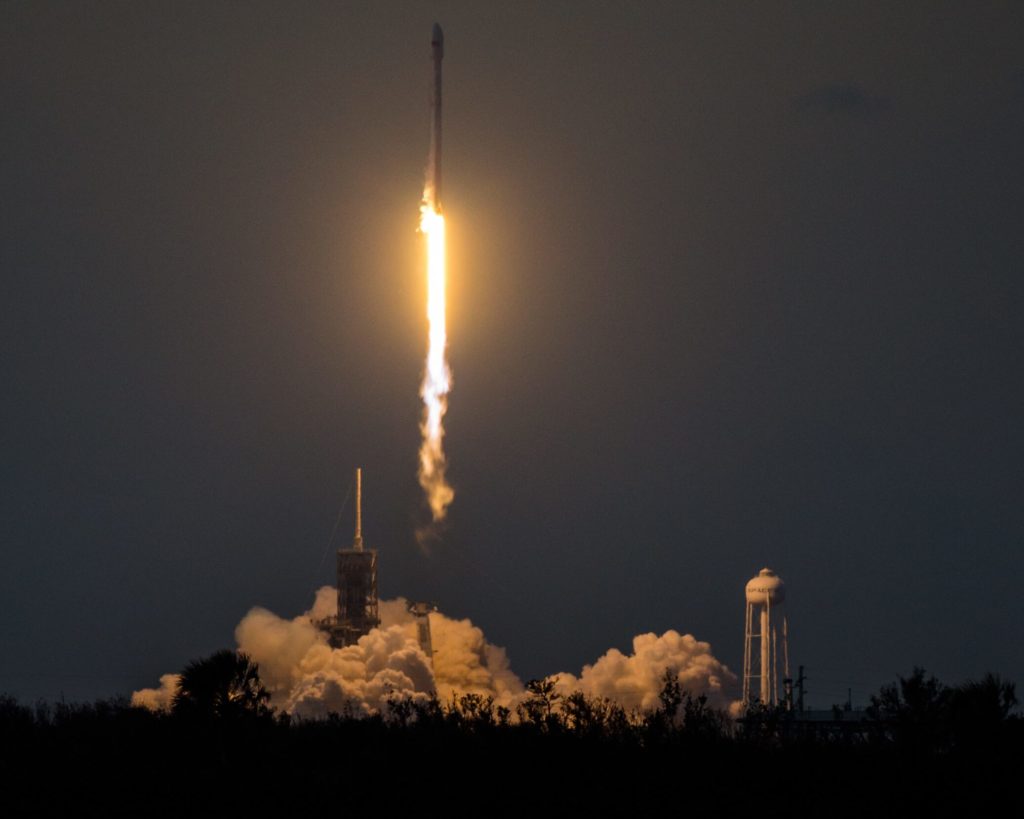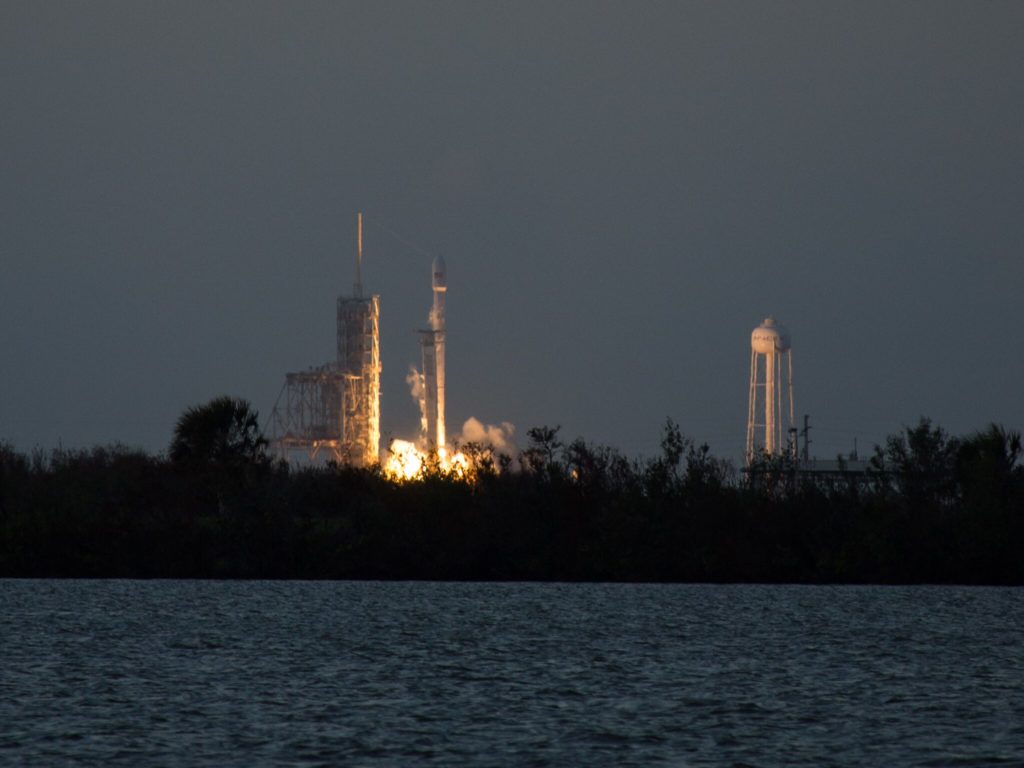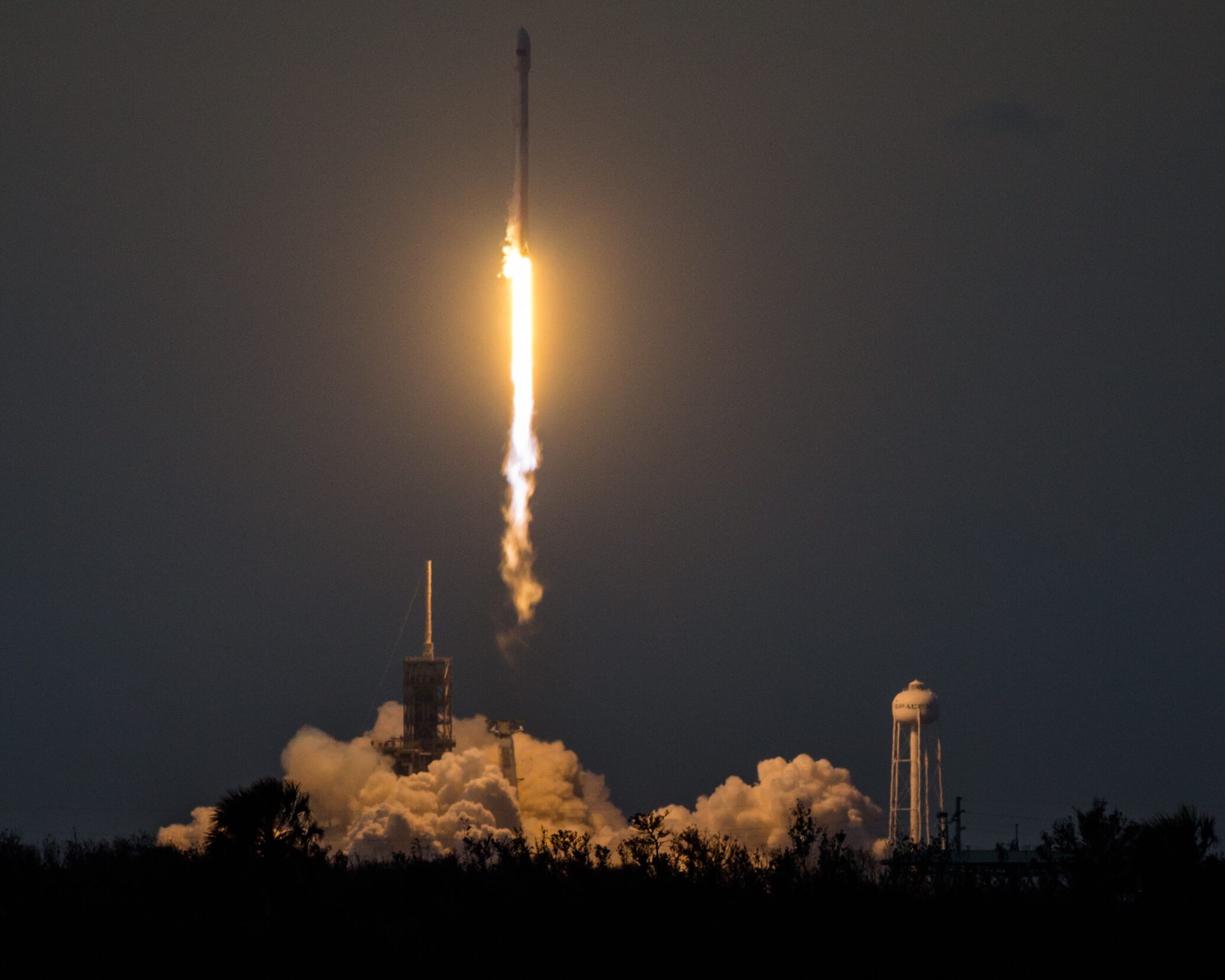
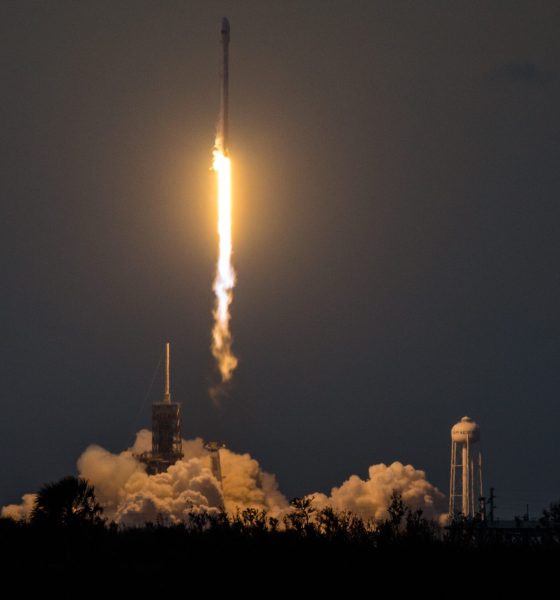
News
SpaceX sticks dramatic drone ship landing, third reuse flight a resounding success
SpaceX has once more accomplished what the launch industry long dismissed as infeasible, conducting their third commercial reuse of a recovered Falcon 9 booster. This particular mission was tasked with launching the 5,200 kg SES-11/Echostar 105 communications satellite into a geostationary transfer orbit. Once it makes its way into the final geostationary orbit, the satellite can be expected to provide communications services to North America in the form of digital television.
After the Falcon 9 booster separated from the second stage, it conducted a rapid 180 degree flip in order to orient itself towards the landing target, an autonomous spaceport drone ship (ASDS) stationed several hundred miles East of the Kennedy Space Center. The hypersonic booster then slowed itself down from roughly 5,000 mph with a series of two burns, culminating in the stage’s second recovery after an orbital-class launch. The booster, 1031, was previously tasked with launching the 10th cargo Dragon mission to the ISS, later landing at SpaceX’s land-based LZ-1 pad in February 2017.
- SpaceX recovered core 1031, which launched CRS-10, in February 2017. (SpaceX)
- Falcon 9 1031 lifts off for the second time from LC-39A. (Tom Cross/Teslarati)
This time around, 1031 got a taste of the ocean while landing aboard Of Course I Still Love You (OCISLY), despite sea conditions that were deemed relatively rough and stormy. It is unlikely that 1031 will ever launch again, as it is a Block 3 Falcon 9 and thus intended to only be reused once or twice. Nevertheless, this core will add to SpaceX’s ever-growing fleet of both operational and decommissioned Falcon 9 cores, most of which are stored in and around SpaceX’s Florida facilities.
This landing and recovery was quite possibly the most dramatic yet for SpaceX. While rapidly reentering into Earth’s thickening atmosphere, the stage experienced extraordinary heating that resulted in the aluminum grid fins nearly glowing white, and the same camera caught gorgeous interplay between ionizing gases coming off the stage and its final landing burn. For a solid minute thereafter, ground control lost the video feed from the first stage, seemingly foreshadowing the core’s untimely demise. However, cameras aboard OCISLY maintained their live coverage and revealed the stage’s successful landing aboard the drone ship soon after.
- Falcon 9 1031 on its way to OCISLY. (SpaceX)
- An incredible view of Falcon 9’s older aluminum grid finds glowing white-hot during reentry. (SpaceX)
- A gorgeous view of Earth’s curvature and orbital sunset. (SpaceX)
The second stage continued to orbit, coincidentally catching an incredible view of the sun setting behind Earth’s limb just before its first orbital insertion burn ended. After a coast period of some 20 minutes, the second stage reignited to boost the SES-11/EchoStar 105 satellite into its final transfer orbit, after which the satellite separated from the stage and continued on its way. The Falcon 9 second stage will eventually reenter Earth’s atmosphere and break apart before impacting the ocean, a process that may be expedited if the vehicle has enough residual fuel to hasten the orbital decay.
Put simply, SES-11/EchoStar 105 demonstrates SpaceX’s growing consistency and the resounding success they are having with the routinization of rapid launch cadence and commercially reusable rockets. The mission is the company’s 15th in 2017 alone, as well as the 12th successful recovery of a first stage this year and the 18th successful recovery total. More importantly, its launch was the third commercial reuse of a Falcon 9 first stage, paving the way for future reuses as the endeavor’s record of success continues without flaw.
- Another example of the intense reentry this Falcon 9 experience during its recovery. (SpaceX)
- 1031 seen just after landing aboard OCISLY. (SpaceX)

News
Tesla aims to combat common Full Self-Driving problem with new patent
Tesla writes in the patent that its autonomous and semi-autonomous vehicles are heavily reliant on camera systems to navigate and interact with their environment.

Tesla is aiming to combat a common Full Self-Driving problem with a new patent.
One issue with Tesla’s vision-based approach is that sunlight glare can become a troublesome element of everyday travel. Full Self-Driving is certainly an amazing technology, but there are still things Tesla is aiming to figure out with its development.
Unfortunately, it is extremely difficult to get around this issue, and even humans need ways to combat it when they’re driving, as we commonly use sunglasses or sun visors to give us better visibility.
Cameras obviously do not have these ways to fight sunglare, but a new patent Tesla recently had published aims to fight this through a “glare shield.”
Tesla writes in the patent that its autonomous and semi-autonomous vehicles are heavily reliant on camera systems to navigate and interact with their environment.

The ability to see surroundings is crucial for accurate performance, and glare is one element of interference that has yet to be confronted.
Tesla described the patent, which will utilize “a textured surface composed of an array of micro-cones, or cone-shaped formations, which serve to scatter incident light in various directions, thereby reducing glare and improving camera vision.”

The patent was first spotted by Not a Tesla App.
The design of the micro-cones is the first element of the puzzle to fight the excess glare. The patent says they are “optimized in size, angle, and orientation to minimize Total Hemispherical Reflectance (THR) and reflection penalty, enhancing the camera’s ability to accurately interpret visual data.”
Additionally, there is an electromechanical system for dynamic orientation adjustment, which will allow the micro-cones to move based on the angle of external light sources.
This is not the only thing Tesla is mulling to resolve issues with sunlight glare, as it has also worked on two other ways to combat the problem. One thing the company has discussed is a direct photon count.
CEO Elon Musk said during the Q2 Earnings Call:
“We use an approach which is direct photon count. When you see a processed image, so the image that goes from the sort of photon counter — the silicon photon counter — that then goes through a digital signal processor or image signal processor, that’s normally what happens. And then the image that you see looks all washed out, because if you point the camera at the sun, the post-processing of the photon counting washes things out.”
Future Hardware iterations, like Hardware 5 and Hardware 6, could also integrate better solutions for the sunglare issue, such as neutral density filters or heated lenses, aiming to solve glare more effectively.
Elon Musk
Delaware Supreme Court reinstates Elon Musk’s 2018 Tesla CEO pay package
The unanimous decision criticized the prior total rescission as “improper and inequitable,” arguing that it left Musk uncompensated for six years of transformative leadership at Tesla.

The Delaware Supreme Court has overturned a lower court ruling, reinstating Elon Musk’s 2018 compensation package originally valued at $56 billion but now worth approximately $139 billion due to Tesla’s soaring stock price.
The unanimous decision criticized the prior total rescission as “improper and inequitable,” arguing that it left Musk uncompensated for six years of transformative leadership at Tesla. Musk quickly celebrated the outcome on X, stating that he felt “vindicated.” He also shared his gratitude to TSLA shareholders.
Delaware Supreme Court makes a decision
In a 49-page ruling Friday, the Delaware Supreme Court reversed Chancellor Kathaleen McCormick’s 2024 decision that voided the 2018 package over alleged board conflicts and inadequate shareholder disclosures. The high court acknowledged varying views on liability but agreed rescission was excessive, stating it “leaves Musk uncompensated for his time and efforts over a period of six years.”
The 2018 plan granted Musk options on about 304 million shares upon hitting aggressive milestones, all of which were achieved ahead of time. Shareholders overwhelmingly approved it initially in 2018 and ratified it once again in 2024 after the Delaware lower court struck it down. The case against Musk’s 2018 pay package was filed by plaintiff Richard Tornetta, who held just nine shares when the compensation plan was approved.
A hard-fought victory
As noted in a Reuters report, Tesla’s win avoids a potential $26 billion earnings hit from replacing the award at current prices. Tesla, now Texas-incorporated, had hedged with interim plans, including a November 2025 shareholder-approved package potentially worth $878 billion tied to Robotaxi and Optimus goals and other extremely aggressive operational milestones.
The saga surrounding Elon Musk’s 2018 pay package ultimately damaged Delaware’s corporate appeal, prompting a number of high-profile firms, such as Dropbox, Roblox, Trade Desk, and Coinbase, to follow Tesla’s exodus out of the state. What added more fuel to the issue was the fact that Tornetta’s legal team, following the lower court’s 2024 decision, demanded a fee request of more than $5.1 billion worth of TSLA stock, which was equal to an hourly rate of over $200,000.
Delaware Supreme Court Elon Musk 2018 Pay Package by Simon Alvarez
News
Tesla Cybercab tests are going on overdrive with production-ready units
Tesla is ramping its real-world tests of the Cybercab, with multiple sightings of the vehicle being reported across social media this week.

Tesla is ramping its real-world tests of the Cybercab, with multiple sightings of the autonomous two-seater being reported across social media this week. Based on videos of the vehicle that have been shared online, it appears that Cybercab tests are underway across multiple states.
Recent Cybercab sightings
Reports of Cybercab tests have ramped this week, with a vehicle that looked like a production-ready prototype being spotted at Apple’s Visitor Center in California. The vehicle in this sighting was interesting as it was equipped with a steering wheel. The vehicle also featured some changes to the design of its brake lights.
The Cybercab was also filmed testing at the Fremont factory’s test track, which also seemed to involve a vehicle that looked production-ready. This also seemed to be the case for a Cybercab that was spotted in Austin, Texas, which happened to be undergoing real-world tests. Overall, these sightings suggest that Cybercab testing is fully underway, and the vehicle is really moving towards production.
Production design all but finalized?
Recently, a near-production-ready Cybercab was showcased at Tesla’s Santana Row showroom in San Jose. The vehicle was equipped with frameless windows, dual windshield wipers, powered butterfly door struts, an extended front splitter, an updated lightbar, new wheel covers, and a license plate bracket. Interior updates include redesigned dash/door panels, refined seats with center cupholders, updated carpet, and what appeared to be improved legroom.
There seems to be a pretty good chance that the Cybercab’s design has been all but finalized, at least considering Elon Musk’s comments at the 2025 Annual Shareholder Meeting. During the event, Musk confirmed that the vehicle will enter production around April 2026, and its production targets will be quite ambitious.
